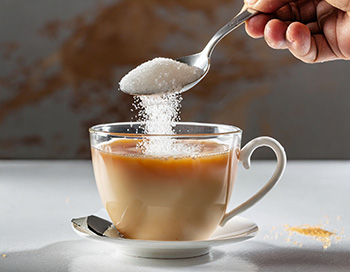Babies need time to learn how to eat, so they won’t swallow much of the food we offer at first. That’s because they may not know what to do with the food you just presented. Just as they needed time to learn how to crawl or roll over, they need time to learn how to eat, chew, and swallow food.
So, don’t be surprised if at first your baby doesn’t eat much. This is totally normal and may take 1 – 2 months for them to grasp the art of eating.
When a baby is showing signs of readiness and sitting upright by about 6 months, you can start introducing solids. It is not wise to introduce Whole Food Plant Based(WFPB) food and solids before 6 months as their gut is not ready for a lot of WFPB baby food. One meal per day is enough to start with when first introducing baby solids.
Homemade foods are best as they are fresher and have a higher nutrient load than packaged baby foods which are highly processed therefore needing nutrient boosters because of the processing. When you are cooking your family’s vegetables, cook extra and freeze them into ice cube trays for easy portioning and defrosting.
Starting at 6 months a baby can start trying the following foods one at a time to check for allergic reactions.
• Mashed very ripe banana
• Stewed apple
• Stewed pear
• Mashed avocado
• Very soft sweet potato, pumpkin, or carrots peeled and steamed
• Steamed greens
• Baby infant cereal (iron-enriched) in breastmilk or formula
• No salt, sugar, fat or other flavours
Once you and your baby feel comfortable with these foods, it is recommended to prioritize plant foods rich in iron. Iron is a nutrient that is so important for little WFPB eaters as they need about 1.8x more iron than non-plant-based kids. This is because the type of iron in plant foods (non-heme iron) is not as readily absorbed as that found in animal foods.
Non-heme iron is bound to a compound called phytate, that makes it a little challenging for our bodies to absorb. However, pairing an iron-rich food with Vitamin C can help with iron absorption. Provide foods like tofu, lentil balls, hummus, and iron-fortified infant cereal.
Some examples of plant foods that provide iron are: beans, lentils, hummus, tofu, gluten-free legume-based pasta, broccoli, spinach, nut & seed butters, barley, and prunes. Focus on providing one iron-rich food at each meal.
The first 2-3 months of introducing baby to solids is the easiest as it is for them mostly just an experience of flavours, taste, and textures as opposed to their main source of nutrition. Parents should not worry too much about what actually gets eaten in the first few months of doing WFPB baby led weaning or introducing baby solids.
Babies should still use breastmilk or formula until 12 months of age as their main source of nutrition. Always feed your baby breastmilk or formula before feeding baby solids 30-60 minutes later. A lot of first-time parents worry about feeding their babies when they start solids, or are unsure of how and when to first introduce solids.
This worry can also bring more confusion for WFPB parents who can struggle to get the right information from their child health nurses or doctor who does not advocate a WFPB diet.
Cow’s milk, soy milk or any other plant-based milk are not suitable as the MAIN milk drink so do not swap formula for rice/soy or any other milk before the age of 12 months.
It is however safe to include plant milk in baby cereals or in other baby solids recipes.
After eight months, it is recommended to do a mix of pureed vegetables. This is often more practical for mums and helps babies improve their self-feeding skills. It also provides a broader range of flavours and lines up with what the family is eating.
At all ages make sure to stay next to your baby when serving WFPB baby food and solids and check they are not choking.
At seven months
• Add one meal per day to have 1-3 meals per day by the end of 7 months.
• Introducing more vegetables and fruits slowly.
• No salt, sugar, fat and oil needed in baby food.
At eight months
• Start offering 3 meals a day that are balanced with fruit, vegetables, good fats and protein vegetables such as parsnip, broccoli, cauliflower and mashed beans and lentils in purees.
• Introduce more grains such as oats in baby porridge.
• You can introduce small pieces of protein such as tofu.
• Mandarin segments, mango, peaches, nectarines, apricots, blueberries, and kiwifruit can be served in purees or small pieces for BLW.
Let baby practice his pincer grasp which develops between 8 & 12 months by serving small items on his high chair tray such as cooked lentils and green peas.
Include some omega-3s such as hemp oil or hemp seeds, chia seeds or flax meal and tahini for calcium and other minerals mixed in foods or in a chia pudding or smoothie.
Test out common allergens such as nuts, tahini, and peanut butter in baby porridge or on a piece of soft bread.
It is safe to include plant milk in baby cereals or in other baby solids recipes.
At nine months
• Add more flavour using more spices and herbs, but do not use salt.
• You can now add onions, leek, capsicum, and mushrooms.
• If using purees, make sure to make them chunkier by now by mashing with a fork instead of a blender.
• Introduce more grains such as cooked buckwheat pasta, cooked rice (soft like in risotto) and millet.
• Millet is a gluten-free grain low in allergens and is very soft when cooked and perfect for little tummies.
• You can start teaching baby to drink from a straw to drink smoothies.
• Offer more food but keep breastmilk and formula as the main source of food.
• Start offering the same food as the adult foods but make the texture suitable for a small baby and do not add salt to baby food as it is dangerous for their kidneys.
At 10 to 11 months
• You can introduce more grains such as cooked quinoa, cooked wheat in pasta.
• All vegetables are safe to be served in appropriate textures and in bigger pieces.
• You can start introducing 2-3 snacks per day such as fruit, baby rusks, peanut butter toast.
• You can make smoothies with calcium-fortified plant milk.
• Have fun introducing new vegetables, grains and fruit as part of meals with the whole family.
At 12 months
• If your baby wants to wean off breast milk or formula you can now introduce drinking milk from a sippy cup such as soy milk or calcium-fortified plant milk.
• Your baby should now almost eat like you do but avoid oily, greasy, salty, spicy and sugary foods.
• Focus on serving lots of green vegetables and nutrient-dense foods.
• Serve good fats such as nut butter, hemp or avocado
• Serve plant-based protein such as hemp seeds, legumes or tofu every day.
At all ages make sure to stay next to your baby when serving WFPB baby.
It’s possible for a baby to get all the nutrients they need from a good, varied WFPB diet and breast milk or formula, but it is also important to take any supplements recommended by your health visitor. However, the first year of life is an important window of opportunity to introduce a wide range of foods, and when baby reaches 12 months, they will be reliant on food for the majority of their energy and nutrients.
Know where the WFPB diet may fall short.
Vitamin B12 supplementation by sublingual drops is essential for anyone on a WFPB lifestyle and understanding the correct dose for a child is important.
Vit D can be received from the early morning sun before the UV index gets high. Fortified foods are also a good idea to help with obtaining these vitamins.
Iron – to help your baby get the 11 mg of iron and 3 mg of zinc she needs each day, a fortified cereal is good—or consider tofu based meals or beans like chickpeas and kidney beans, according to Jenna Helwig, author of Real Baby Food. Walnuts, flax seeds, kale and chia seeds all offer plant-based versions of Omega 3s, while fortified soy milk—or a half-hour of sun exposure before 9 am without sunscreen—helps with Vitamin D. Fortified cereals or supplements are the best WFPB sources of Vitamin B12.
The most important message is that a plant-based diet can fully support healthy living in people of all ages when it is well-planned.
The food your baby eats in their first few years of life can impact the health of your child as they grow and enter adulthood. It can take decades for certain lifestyle diseases to develop but they can be directly associated with your child’s nutrition.
Research shows that a WFPB diet can play a part in your baby having a healthy start in life. During the first 1,000 days of life, starting at conception until your baby’s second birthday, nutrition intake is of great importance to your baby’s ongoing and long-term health. This is especially true for their brain development.
The great news is it is never too late to start introducing a healthy diet, but the earlier you begin the bigger the impact.






